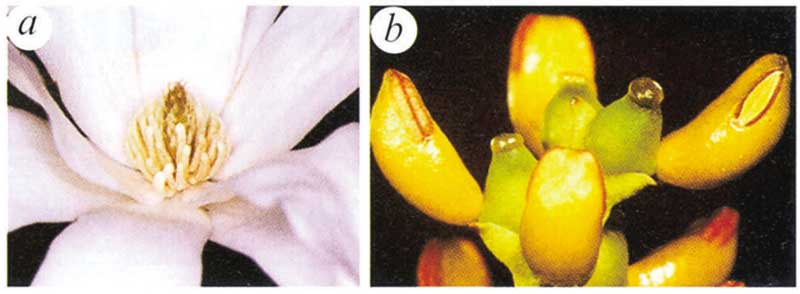
a color plate from the essay
The Origin and Early Diversification of Angiosperms
by Peter R. Crane, Else Marie Friis and Kaj Raunsgaard Pedersen
Figure 1 (from page 236 of Shaking the Tree: Readings from Nature in the History of Life edited by Henry Gee)
Extremes of floral diversity in extant basal (magnoliid) angiosperms. a, Large multiparted flower of extant Magnolia stellata (Magnoliaceae), showing nine tepals and numerous stamens and carpels; ×1. b, Small few-parted flowers of Sarcandra glabra (Chloranthaceae); each flower consisting of a single bract, carpel and stamen (photograph courtesy of P. K. Endress), ×3.8. Interpretations based on recent phylogenetic results14 suggest that flowers of Magnolia and Sarcandra are, respectively, elaborated and reduced compared to the basic angiosperm condition. More radical interpretations of floral evolution suggest that all angiosperm flowers may not be homologous, and that the simple flowers of some (such as Sarcandra) are equivalent only to parts of flowers in others (such as Magnolia).44,86
Back to the list of color illustrations.
About the book: Shaking the Tree: Readings from Nature in the History of Life edited by Henry Gee, published by the University of Chicago Press.